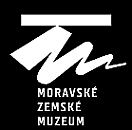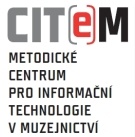Projects
Since the birth of the predecessor of CITeM, the Department of Information Technologies at the MZM in 1986, the development of instruments for documentation and administration of the collections has been its main task. The result of these efforts is a number of versions of AISM and Demus. The simple AISM system was used in 100 Czech museums in the 1990s while the far more sophisticated Demus has had three evolutionary generations. The latest Demus01 is used by more than 160 institutions; according to the survey of the Ministry of Culture of the Czech Republic, carried out in 2006, it contains 47 per cent of the total number of 5 million digitised collection items. However, in many respects Demus is restricted by the limitations of the applied technology (MS Access) and we stopped developing it in 2008. Nevertheless, we continue to offer methodological help, training and data conversion to all the users. Demus could be replaced by the Integrated System of Collection Administration ( Integrovaný systém správy sbírek – I3S), the introduction of which we have been supporting since 2006 by means of a project.
The increased need for exhibiting collection items catalogues on the web and the fact that the database system Access is not suitable for web applications has led to our decision to create and offer a multipurpose viewer in 2003. We named it ProMuS (prohlížeč muzejních sbírek), i.e. museum collections browser. It is not restricted to collections and museums only. Its upgraded version Promus01 has been available since 2009. Along with its application we have also prepared and will administer the Registry of the Fine Arts Collections for the Association of Galleries.
Both foreign and Czech libraries have been using the Internet for “sharing authorities” and other purposes. By “sharing authorities” we mean lists of outstanding and alternative names of personalities and corporations, geographical names and subject terms, including their historical and hierarchical relations. So far, Czech museums have been using nothing but local uncoordinated dictionaries. Demus partially solves the problem of thesauruses – but only within a framework of its own dataset. That’s why CITeM is now working on the project “National Authorities Generated by Museums and Galleries – Interoperability with the Czech National Library”, planned for the years 2007 – 2011. The aim of the project is to enable museums and galleries to profit from the advantages of using authorities. In principle, the superstructure of authorities used so far in the sphere of libraries will thus be extended. We are now beginning with personal names, but the main emphasis will be placed on subject terminology.
Act No. 122/2000 Sb. on Museum Collections Preservation stipulated the rights and duties of collection owners and introduced the Central Collections Registry (CES), administered by the Czech Ministry of Culture. In order to make the recording and updating of CES data we created the CESik application in 2001. We organize its distribution and provide user support.
In compliance with Act No. 212/2000 Sb., the Czech Ministry of Culture releases works of art that were once owned, or are deemed to have been owned, by the Holocaust victims. For this purpose, the dataset application Restitution-Art was developed in the MZM in 2000, whose administration and updating we are in charge of.
The European project Michael Plus represents a dataset of digital collections and services, gathering data from national portals. CITeM was entrusted with the task of maintaining the Czech National Portal Michael Plus by the Czech Ministry of Culture in 2008.
We have also founded Wiki CITeM for the practical and easy updating of methodological documents. A wide range of people interested may thus participate in creating and editing the texts.
Safe data storing and maintaining huge data volumes is a challenge that all serious IT users are bound to be faced with. In co-operation with the Technical Museum in Brno, we have put into operation a model project called Data Storage, based on a simple principle of two reciprocally mirror servers, one of them located in the MZM, the other one in the TMB.










